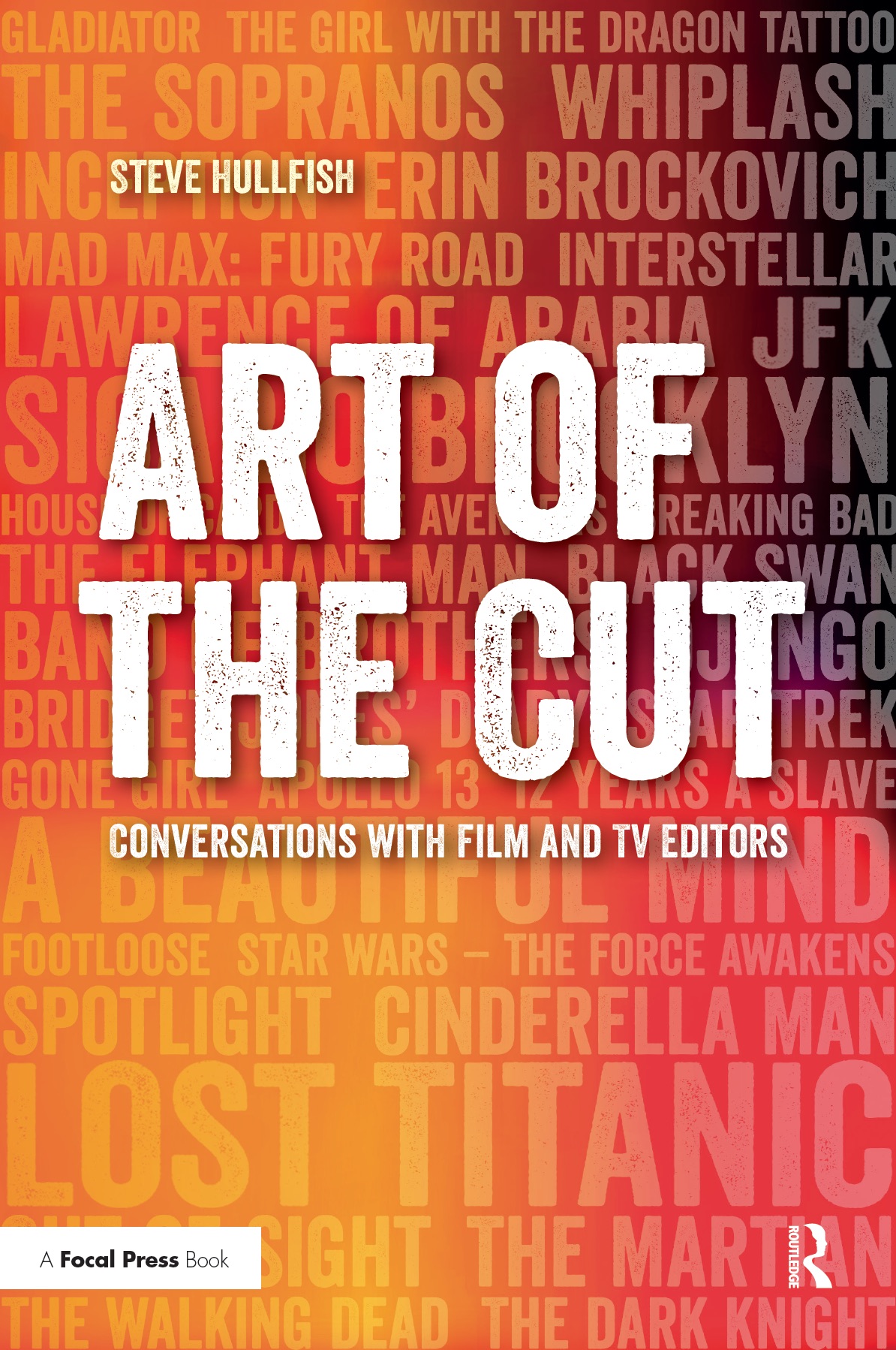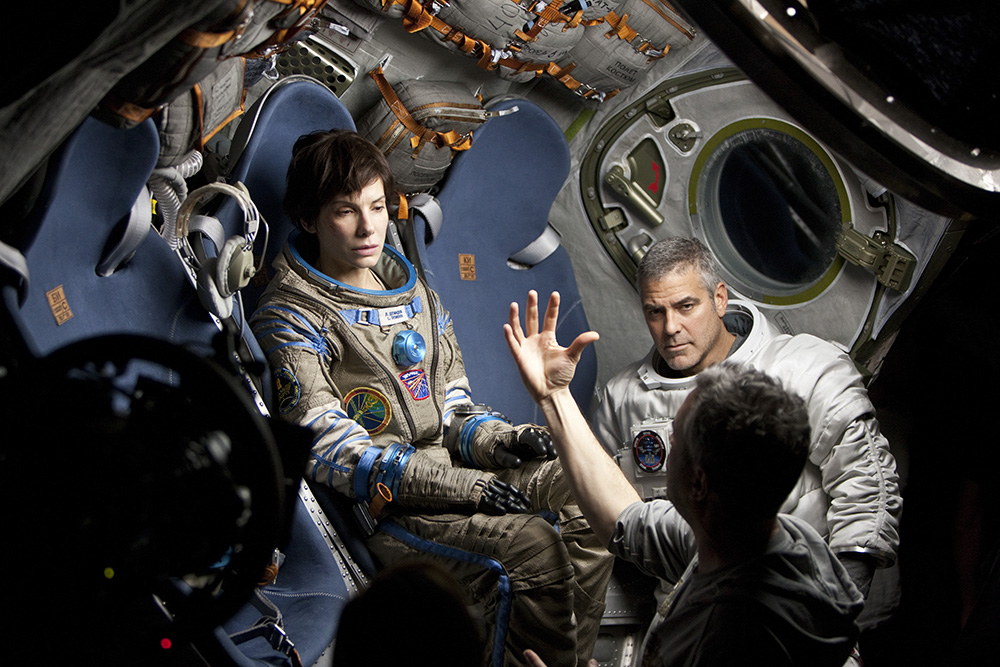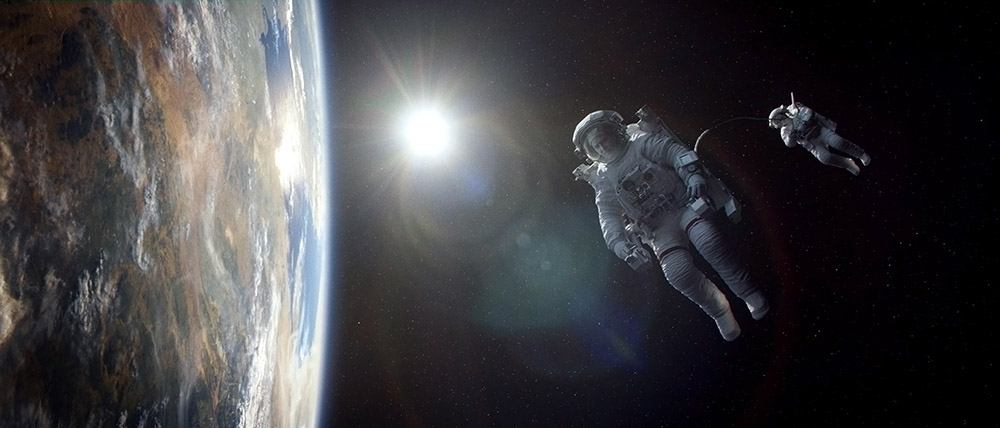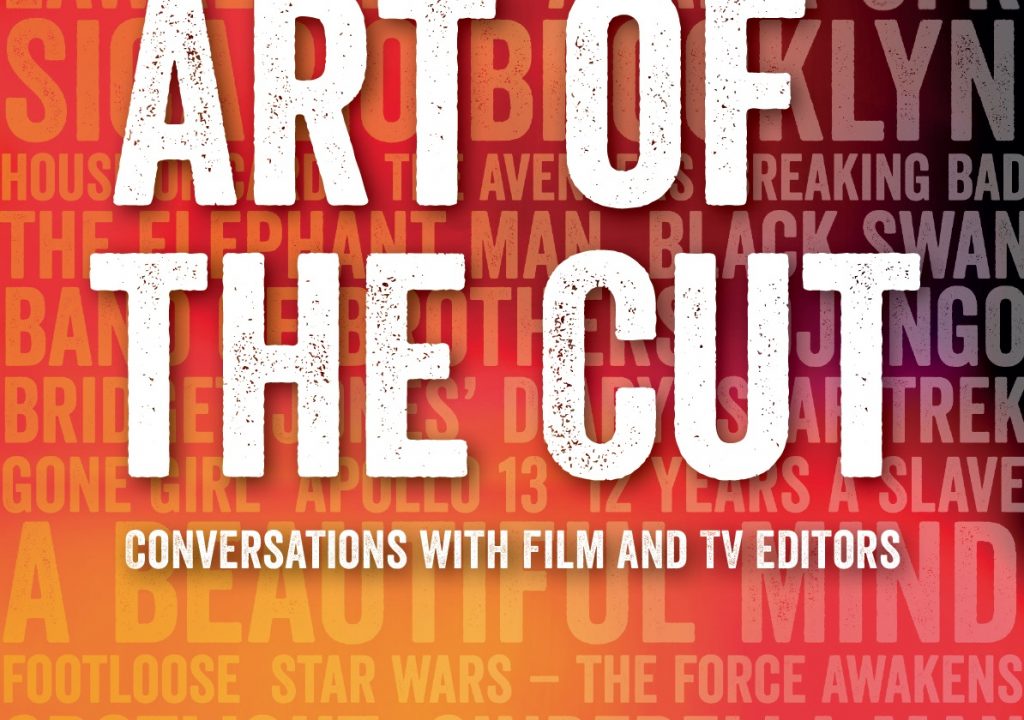
One of the most intriguing editing points for me was the extended single shot that starts the movie. And that’s where my interview with Gravity’s Mark Sanger begins:

SANGER: As you can imagine the need to ‘edit’ the shot was much more than just the timing, which rhythmically was not something we were scrutinizing early on.
The film was blocked in the editing 18 months prior to shoot, in order to establish both what, but more crucially how we would shoot the story.
The process was about telling the story in the most effective way, which would in turn pose the logistical questions that would need to be answered by Tim Webber prior to shoot.
Some of these shots included practical elements of the actors and some were fully CG with the edited dialogue running throughout. The effect is an 11 and a half minute single shot but the reality is that it is 3 years work of editing.

SANGER: The initial shell of our pipeline was not dissimilar to a feature animation, in that in the early stages I was editing with storyboards and pre-vis.
However this quickly evolved once we realised that in most sequences the edit needed to be close to a lock prior to the shoot.
The lightbox designed by Emmanuel Lubezki and Tim Webber to shoot the actors was driven shot-by-shot by the edit we had painstakingly constructed.
Though we did do a lot of editing during post-production we needed a concrete cut to work from in advance of the shoot, so this is where the similarity with feature animation ended.
HULLFISH: How much coverage was there on some of the longer shots? It felt like there might have been nothing but the single shot, at times?
SANGER: There was no conventional coverage on anything. We had multiple takes to choose and mould performances from, but the actors would be presented with the animated cut in the morning and restricted to performing within the confines of what had been edited. This was due to the need to light the actors and their movements in the same way as the lit animation in the cut.
It meant that Sandra & George were heavily restricted during the shoot and the fact that this is imperceptible onscreen is a testament to their astounding abilities.
SANGER: Alfonso has the film in his head. He dives between Editorial and VFX like a tasmanian devil, working on the cut with me, then updating the animation as I’m supplying the latest cut to VFX. Changes he would make in animation would dictate an editorial change which he would need to make very quickly with me either in person or down the phone in order to not let either department get ahead of one another.
Essentially he was editing whether he was with me or with VFX, because the two were so directly linked on this film.
The work would then hit a new height – what Alfonso describes as ‘beautiful accidents’ – when a change he made in animation would dictate a change in the picture edit which in turn would suggest a change that would further enhance the scene.
Tim Webber, myself, and our teams had to work very quickly or the animation would overtake the latest edit, meaning the whole pipeline would have fallen apart.
HULLFISH: You cut Gravity on Avid Media Composer. Were you working on two or more separate systems on an ISIS?
SANGER: We were on 7 systems running from a standard Unity system.
HULLFISH: At the beginning of the movie, there are titles that explain that sound doesn’t travel in outerspace. Sometimes it was very apparent that huge explosion and impacts were happening with no sound effects and other time there were sound effects. How much sound design to you try to emulate in the editing process before it got to the audio design team?
SANGER: As the film needed to be clear in its tone and intentions from early on in order for both the studio and the actors to buy into it, I populated the track with a lot of abstract bass effects, almost like subliminal sound. At this stage it was enough that things in the room reverberated during playback without the specifics of sound design. This temp design was very layered and organic without being complex. It served the purpose of setting a tone but was gradually stripped out once Glenn and his team began.
SANGER: During the blocking process we heavily utilized the effects tools to play with ideas and concepts. I was constantly moving characters and objects around, slipping dialogue and re-timing animation in order to give a blueprint of Alfonso’s latest concepts to the VFX guys.
However once we got to the shoot it became more like a conventional editing process assessing performances, which is where the shape of the film really evolved.
HULLFISH: How did you organize the project?
SANGER: As with any VFX-heavy film, we worked in a series of sequences within the reels. Every time I made a change of any sort to a particular sequence, the changes were annotated by my VFX Editor, Steve Pang, and a fresh update of the sequence issued to VFX. These were rigidly tracked by my Associate, Tania Goding, and second assistant, Debs Richardson, for anything that would affect the work already being done by any of the departments.
I would often issue multiple versions of any given sequence each day which would need to be supplied to the relevant artists at Framestore for the creative work.
Our Executive Producer Nikki Penny would need to scrutinize these cuts every single time one hit her desk in order to ensure everybody was aware of any consequences.
So the project was structured around being the first stage in this process. I would have nothing more than I required for the creative work on my machine. However I would keep every version of each sequence in an archive folder in order to reference it at any time.
SANGER: We shot on Arri Alexas for three months across two stages at Shepperton Studios. The shoot had been defined so precisely in advance that the practical elements of any given shot would lock seamlessly into our animation.
Alfonso & I would make decisions over preferred takes and then I would garbage matte this over the animation. This would then give us a sense of the scene which in turn opened up many more questions.
The restrictions we had with the pre-determined shots and no coverage actually opened up more possibilities than we had imagined during post-production. The film was shaped in post just as much as it had been in pre-production.
HULLFISH: How/Why did Cuaron choose you to edit this movie?
SANGER: My background began as a film assistant years ago, then as a First Assistant and I would also work as a Visual Effects Editor to keep a second string to my bow.
I had worked as the latter for Alfonso on ‘Children of Men’ and we got on well. I think the broad nature of my career including the knowledge of visual effects in the editing process was probably why he called me.
HULLFISH: With so many long takes, did you plan specific visual elements in frame or camera moves to help develop a sense of rhythm and timing INTERNAL to the take itself? Were there specific things you requested from VFX in those long takes that you thought would help develop rhythms… like light flares or objects floating through at specific times?
SANGER: There was certainly care taken in using the physical surroundings but it was less to do with objects and more to do with light as a tool to drive the pace of the story.
The sun rising and the characters progress from right to left as the light constantly moves around them is all subliminally driving the notion that our villain – the debris – is on its cyclical journey back to threaten them.
SANGER: I discussed with Alfonso early on that we would cut the film in 2D. For me, the 2D version needed to work completely before we did any post-conversion. He was in agreement that we needed to film to work as a 2D foundation before we elevated the experience with either 3D or Dolby Atmos.
HULLFISH: Can you briefly describe both the dailies workflow and the on-line/DI workflow? How far did you follow the edit after the off-line was completed?
SANGER: My team and I started on film and we use the ground rules of that knowledge as a basis for any film we work on. As such, even though Gravity is such a digital production, we treated the digital deliveries from the stage the same way we would an old-fashioned telecine. The dailies were synced within Editorial and Editorial supplied the files for dailies screenings.
The takes were broken down by my team conventionally but also to a minute level of detail as what makes an Alfonso Cuaron for me is always the detail. I could usually access any take, line, word or breath at any given moment.
Once the takes had been selected and temped in the sequences we issued them to VFX with handles.
We designed the DI process in a similarly conventional fashion.
Once the finagled VFX were issued to us in the Avid, Tania would issue the 2D EDLs to DI and our 3D conform editor Alastair Grimshaw would ensure the 3D conform was submitted accurately. Sometimes a 2D final would simply be the left eye of a 3D final, but equally there may be any number of reasons why the 2D final may be standalone, requiring unique files for the 3D version.
As you can imagine, without my complete trust in my highly experienced crew, I would not have survived the process with my sanity and the wheels of the machine would have fallen off very quickly.
SANGER: No we didn’t. It would have actually restricted us as we often improvised moments on the spot, requiring the Avid effects tools to manipulate existing material into a fresh idea, along with some fresh dialogue recorded by Editorial…
HULLFISH: Did you seriously consider any other editing system? What were your decision making points in deciding on Avid over FCP, FCP-X, Premiere or LightWorks?
SANGER: Nope, on such a huge project Avid was the only choice for us. It’s not that I don’t necessarily trust any of the other systems. It’s simply that when you are presented with such an awesome task as Gravity, it is much more logical to stick with a known, tried-and-tested system.
Neither Avid or our supplier Hireworks, ever let us down once in the entire three years so our thinking was justified.


